There are many reasons an organization may want to retain video footage for a long period of time: OSHA recordable incidents, workers compensation claims, first report of incident (FROI) review, maintenance and operational reviews, theft or vandalism investigation, just to name a few. Depending on state, industry, or other corporate requirements, video retention may be required for anywhere from 90 days to 3 years. Long term video storage requires a lot of storage capacity, even with the newest H265 or ultra 265 codecs, adding up to tens or hundreds of terabytes of capacity required, with some organizations looking at petabyte scale storage requirements!
When considering an investment in video recording storage capacity, the importance of redundancy must not be forgotten. With no redundancy, a drive failure results in total loss of the contents of that drive, meaning that you have just lost the data that you invested so heavily in storing. RAID (Redundant Array of Independent Disks) storage requires at least one extra hard drive to provide parity and prevent data loss in the event of hard drive failure.
RAID storage requires a RAID card to manage the array of disks. Not all RAID cards are the same, different RAID cards support different RAID levels, and special cards are needed to support nested RAID. There is no right answer for the “best” RAID array to choose, it is always a cost-benefit analysis to balance redundancy, performance, hardware cost, and uptime.
There are 7 standard RAID levels, and at least 6 nested RAID levels that utilize two or more standard RAID levels in combination. The most common RAID levels chosen for video storage are briefly discussed below.
RAID 0: striping without parity. This means that if any one of the drives in RAID 0 fails, the entire array fails and all data is lost. The benefits of RAID 0 storage are in read/write performance, and this RAID configuration is not recommended for video storage.
RAID 1: mirroring. This is the most basic form of RAID storage that provides redundancy. Every single hard drive in RAID 1 is an exact copy, which reduces maximum storage capacity to the size of the smallest drive in the array. So, (2) 1TB hard drives in RAID 1 has a maximum storage capacity of 1TB. Requires a minimum of (2) drives, but will remain operational as long as (1) drive is remaining.
RAID 5: block-level striping with distributed parity. A more complicated form of redundancy that allows the array to remain operational as long as no more than 1 drive fails. Requires a minimum of 3 drives. Reduces maximum storage capacity by (1) drive, so (3) 1TB hard drives in RAID 5 has a maximum storage capacity of 2TB.
RAID 6: block-level striping with double distributed parity. Similar to RAID 5, but allows the array to remain operational as long as no more than 2 drives fail. Requires a minimum of 4 drives. Reduces maximum storage capacity by (2) drives, so (4) 1TB hard drives in RAID 6 has a maximum storage capacity of 2TB.
RAID 10: striping and mirroring. Similar to RAID 1, in that storage capacity is significantly reduced, with an improvement to read/write performance. RAID 10 is actually (2) or more groups of RAID 1 storage in RAID 0 configuration. Requires a minimum of 4 drives. Reduces maximum storage capacity by at least one-half; a (4) 1TB hard drive configuration would have a maximum storage capacity of 2TB.
RAID 50: double block-level striping with parity. RAID 50 is (2) or more groups of RAID 5 storage in RAID 0 configuration. Requires a minimum of 6 drives. Reduces maximum storage capacity by one drive per RAID 5 group; a (6) 1TB hard drive configuration would have a maximum storage capacity of 4TB.
RAID 60: double block-level striping with double parity. RAID 60 is (2) or more groups of RAID 6 storage in RAID 0 configuration. Requires a minimum of 8 drives. Reduces maximum storage capacity by two drives per RAID 6 group; a (8) 1TB hard drive configuration would have a maximum storage capacity of 4TB.
As you can see, RAID storage is a complex topic, but it must be considered for any serious investment in data storage. RAID storage is a form of protection, like insurance, and it would be irresponsible to make a large investment without any sort of protection. Consult a professional to help select the optimal RAID storage level for your application and budget.
Want to share this story on social media? Use these hashtags! #Business #Surveillance
| New Products | |
| Top Featured Products | |
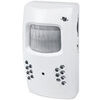 Motion Detector Alarm Color Hidden Camera With Built-In DVR - Mini Alarm DVR with PIR Detection & Motion Detection The PIR MOTION DETECTOR HIDDEN CAMERA with built-in DVR is the best on the market. It doesn't just look... Motion Detector Alarm Color Hidden Camera With Built-In DVR Motion Detector Alarm Color Hidden Camera With Built-In DVR - Mini Alarm DVR with PIR Detection & Motion Detection The PIR MOTION DETECTOR HIDDEN CAMERA with built-in DVR is the best on the market. It doesn't just look... Motion Detector Alarm Color Hidden Camera With Built-In DVR |
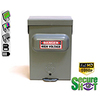 SecureShot 1080p High-Def Electrical Box Hidden Camera/DVR w/NightVision - This ultimate electrical box SecureShot DVR offers features others only imagine. Our 940nm invisible IR illuminator array records in total darkness... SecureShot 1080p High-Def Electrical Box Hidden Camera/DVR w/NightVision SecureShot 1080p High-Def Electrical Box Hidden Camera/DVR w/NightVision - This ultimate electrical box SecureShot DVR offers features others only imagine. Our 940nm invisible IR illuminator array records in total darkness... SecureShot 1080p High-Def Electrical Box Hidden Camera/DVR w/NightVision |
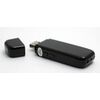 USB Camstick Spy Camera w/Night Vision - The CamstickNV looks and functions like an ordinary flash drive. Yet this storage device conceals a DVR capable of recording both audio and quality color video.Motion activation mod... USB Camstick Spy Camera w/Night Vision USB Camstick Spy Camera w/Night Vision - The CamstickNV looks and functions like an ordinary flash drive. Yet this storage device conceals a DVR capable of recording both audio and quality color video.Motion activation mod... USB Camstick Spy Camera w/Night Vision |
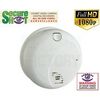 SecureShot First Alert Smoke Detector Camera/DVR w/NightVision & 1 Year Battery - Our SecureShot Full High Definition 1080P Smoke Detector w/ 1 Year Standby Battery Camera/DVR is MADE IN USA. It features Amazing 1080P Full... SecureShot First Alert Smoke Detector Camera/DVR w/NightVision & 1 Year Battery SecureShot First Alert Smoke Detector Camera/DVR w/NightVision & 1 Year Battery - Our SecureShot Full High Definition 1080P Smoke Detector w/ 1 Year Standby Battery Camera/DVR is MADE IN USA. It features Amazing 1080P Full... SecureShot First Alert Smoke Detector Camera/DVR w/NightVision & 1 Year Battery |
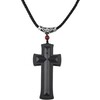 Cross Hidden Spy Camera w/Built in DVR - The Cross Hidden Spy Camera with built in DVR is a tiny spy camera hidden inside a mini wearable cross. Cross Hidden Spy Camera w/Built in DVR Cross Hidden Spy Camera w/Built in DVR - The Cross Hidden Spy Camera with built in DVR is a tiny spy camera hidden inside a mini wearable cross. Cross Hidden Spy Camera w/Built in DVR |
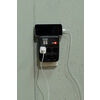 Bush Baby Wifi Outlet - This functional 6 plug wall outlet can support up to six devices and even comes with two functional USB ports and comes in Black or White color. With this built in hidden camera you can keep track ... Bush Baby Wifi Outlet Bush Baby Wifi Outlet - This functional 6 plug wall outlet can support up to six devices and even comes with two functional USB ports and comes in Black or White color. With this built in hidden camera you can keep track ... Bush Baby Wifi Outlet |
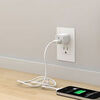 Mini Phone Charger Spy Camera/DVR - Functional phone charger. Our NEW Mini Charger Spy Camera/DVR is a small but powerful device. It offers Hi-Definition 1080p recording resolution hidden discreetly inside a functional ... Mini Phone Charger Spy Camera/DVR Mini Phone Charger Spy Camera/DVR - Functional phone charger. Our NEW Mini Charger Spy Camera/DVR is a small but powerful device. It offers Hi-Definition 1080p recording resolution hidden discreetly inside a functional ... Mini Phone Charger Spy Camera/DVR |
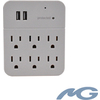 Bush Baby Stealth Hi-Def Outlet Spy Camera/DVR - FREE 16GB Micro SD Card - This wall adapter is perfect for just about any location. Its built-in camera on the front is positioned so that this ordinary looking object can b... Bush Baby Stealth Hi-Def Outlet Spy Camera/DVR - FREE 16GB Micro SD Card Bush Baby Stealth Hi-Def Outlet Spy Camera/DVR - FREE 16GB Micro SD Card - This wall adapter is perfect for just about any location. Its built-in camera on the front is positioned so that this ordinary looking object can b... Bush Baby Stealth Hi-Def Outlet Spy Camera/DVR - FREE 16GB Micro SD Card |
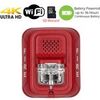 Secureguard 4K Ultra HD WiFi Battery Powered Fire Alarm Strobe Spy Camera - - 4K Resolution Battery Powered Spy Camera This Fire Strobe is WiFi enabled with a 4K Spy camera inside.You can remotely view and control the cam... Secureguard 4K Ultra HD WiFi Battery Powered Fire Alarm Strobe Spy Camera Secureguard 4K Ultra HD WiFi Battery Powered Fire Alarm Strobe Spy Camera - - 4K Resolution Battery Powered Spy Camera This Fire Strobe is WiFi enabled with a 4K Spy camera inside.You can remotely view and control the cam... Secureguard 4K Ultra HD WiFi Battery Powered Fire Alarm Strobe Spy Camera |
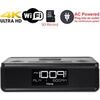 Secureguard 4K Ultra HD WiFi iPhone Dock Radio Spy Camera - Our Secureguard 4K Resolution WiFi Spy Camera is an iPhone Dock Radio with WiFi enabled with a 4K Spy camera inside.You can remotely view and control the camera ... Secureguard 4K Ultra HD WiFi iPhone Dock Radio Spy Camera Secureguard 4K Ultra HD WiFi iPhone Dock Radio Spy Camera - Our Secureguard 4K Resolution WiFi Spy Camera is an iPhone Dock Radio with WiFi enabled with a 4K Spy camera inside.You can remotely view and control the camera ... Secureguard 4K Ultra HD WiFi iPhone Dock Radio Spy Camera |
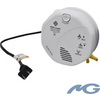 Bush Baby 4K WiFi Two Camera Smoke Detector Spy Camera/DVR - ON SALE: $30 OFF!Are you looking for a smoke detector that covers all angles of the room? Then look no further. The Bush Baby 4K WiFi Two Camera Smoke Detector S... Bush Baby 4K WiFi Two Camera Smoke Detector Spy Camera/DVR Bush Baby 4K WiFi Two Camera Smoke Detector Spy Camera/DVR - ON SALE: $30 OFF!Are you looking for a smoke detector that covers all angles of the room? Then look no further. The Bush Baby 4K WiFi Two Camera Smoke Detector S... Bush Baby 4K WiFi Two Camera Smoke Detector Spy Camera/DVR |
 Bush Baby 4K WiFi Dog Spy Camera/DVR - The Bush Baby 4K Wi-Fi Dog is the perfect device to protect your young ones. Whether you are making sure your child is staying out of trouble or keeping an eye on the babysitter no o... Bush Baby 4K WiFi Dog Spy Camera/DVR Bush Baby 4K WiFi Dog Spy Camera/DVR - The Bush Baby 4K Wi-Fi Dog is the perfect device to protect your young ones. Whether you are making sure your child is staying out of trouble or keeping an eye on the babysitter no o... Bush Baby 4K WiFi Dog Spy Camera/DVR |

|
Be assured that your shopping experience is completely safe. The order site is secured using a Thawte SSL Web Server Certificate which encrypts all data to and from the site. However, if you prefer to pay with check or money order, just choose the off-line option when you check out. |

|

















